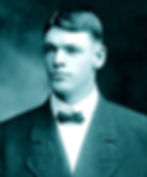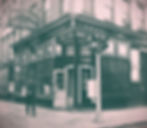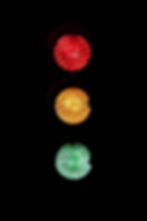Let There Be Light: The ever evolving design of traffic signals & what that means for the future
- Staff
- Apr 21, 2023
- 7 min read
by #LizPublika
Before the Light
Traffic signs came into existence long before traffic signals, and traffic signals came into existence long before the invention of automobiles. In 1722, for example, police officers were tasked with directing horse-drawn traffic on the London Bridge, which was coming in and out of either London or Southwark. Each officer had to make sure that all of the cars going in the same direction would stay on the same side of the street, but the strategy was not safe or practical in the long run, and so alternative methods were sought.
1868

Proposed by British railway manager and signaling engineer John Peake Knight (1828 - 1886), the first traffic signal was installed at George and Bridge streets, outside the Houses of Parliament in London at the request of the lawmakers who were afraid of being trampled by traffic.
Intended for nighttime use, the primitive design combined three semaphore arms with red (meaning: STOP) and green (meaning: CAUTION) gas-powered lights. Mounted on a pillar, police officers manually operated the traffic signals, so that the correct light faced oncoming traffic, by using a lever at its base. The design was constructed by the railway signal engineers of Saxby & Farmer. Unfortunately the traffic light exploded leading to the serious injury of the police, as such, further development was halted until the era of the internal combustion engine.
“In 1869, the House of Commons took up the issue of dismantling the signal. After a typically British debate, it was decided that the light should not only remain, but that others should be erected citywide. The design, however, was changed and by 1872 the original light at Bridge and George was taken down.” (Information about how the design was changed is unavailable.)
1910
Modern traffic lights are an American invention. Patent No. 976,939 for a "Street Traffic System" was granted to Ernest E. Sirrine (birth date unknown), an engineer from Chicago, Illinois. He based his design on the earlier system pioneered by J. P. Knight. It featured crosswise-mounted sign arms that rotated to showing "Stop" and "Proceed" commands alternately in each direction, with each sign mounted on glass panels and illuminated by electric lights.

“The signs were designed to be posted at road intersections and operated via a motor that could automatically rotate the signs. Additional signs at intersections on parallel streets could be wired to work in conjunction to time traffic patterns. The signs could also be manually alternated by a police officer posted at the side of the road.”
1912

Operated by a police officer, a traffic control device was placed on top of a tower in Paris at the Rue Montmartre and Grande Boulevard; it involved a revolving four-sided metal box on top of a glass showcase where the word “Stop” was painted in red and the word “Go” painted in white.
Meanwhile, in America, as automobile traffic increased, Salt Lake City police detective Lester Farnsworth Wire (1887 - 1958) designed the first electric traffic light based on the European semaphore system that could be operated from the side of the road. “The simple ‘flashing bird house’ used a two-way switch to control red and green lights and was powered by the lines for the trolley cars.” It was first installed in Cleveland, Ohio, on August 5, 1914, at the corner of 105th and Euclid Avenue.
1917
Today’s tri-tone signals developed when the yellow light between red and green was added by a Detroit police officer named William Potts (1883 -1947). The yellow color was to alert drivers and pedestrians of the oncoming change.
“Nobody paid the lights at Main and Second South streets much mind at first, but eventually they caught on throughout the city. Salt Lake also became, in 1917, the first U.S. city to interconnect and synchronize its signals.”

In 1920, Potts also built the first four-direction light, with his home city becoming the first to implement it, at the intersection of Woodward Avenue and Fort Street.
“Seventy-five years later, the traffic signal designed by Potts has become the standard by which cities around the world regulate traffic. Despite their apparent simplicity--stop, go, stop, go--traffic signals are among the most technologically advanced pieces of infrastructure most cities operate, relying on sometimes vast computer networks to keep traffic moving smoothly.”
1920
Attempting to relieve traffic in its downtown business district, Los Angeles installed its first automated traffic signals, manufactured by Acme Traffic Signal Co., in 1920 at five locations on Broadway. These signals paired “Stop” and “Go” semaphore arms with small red and green lights, much like the originals did, except bells functioned like today’s amber or yellow lights, ringing when the flags changed — a process that took five seconds. By 1923, 31 Acme traffic control devices were installed in Los Angeles.
“While they helped relieve traffic congestion, the semaphore signals had several drawbacks. The mechanical arms often became stuck, especially in inclement weather, confusing drivers and choking the flow of traffic. More importantly, their location at street corners made them difficult to spot, as trucks slowing to make a turn could block motorists’ view of the signals.
“In response, Los Angeles experimented by placing signals in the middle of a few of its busiest intersections. Nicknamed the “American Bobby” since it stood in the same place as a London traffic control officer, the new signal stood high atop a tall stanchion. Its location in the center of the intersection may have presented a traffic hazard, but the red and green lights, which replaced the unreliable semaphore arms, were easily visible to motorists in all four directions.”
1923
Garrett Morgan (1877 - 1963), who referred to himself as “the black Edison,” was a successful African American entrepreneur and inventor. After witnessing a horrific accident between a horse-drawn carriage and a car in 1922, Morgan decided to work on an automated traffic signal system.

“He received US Patent 1,475,024 for his T-shaped, manually operated traffic signal that ‘stopped vehicles in both directions before changing the direction of traffic flow. This brief pause reduced the possibility of a collision caused by a vehicle continuing in motion after the STOP signal was displayed”... The pause in traffic flow also provided a safe interval for pedestrians to cross the street. Eventually, however, ‘the safety interval was standardized in a different traffic signal that superseded Morgan's design: the three-position signal with red, amber and green lenses.’ …Morgan sold the patent to the General Electric Company for $40,000 (about $612,000 today); General Electric installed three-armed traffic signals in cities across the country.”
1928

The lifelong inventor and engineer Charles Adler Jr. (1899 - 1980) developed a sonically actuated traffic light. "I was tired of being stopped by timed signals for no reason at all," he shared with The Evening Sun in a 1977 interview. "I thought it was outrageous that a human being should be subject to a clock." Before his invention, traffic signals were time operated. To activate Adler’s signal, however, drivers had to pull up to a red light and honk their horns to make the light change. He installed his creation in Baltimore, making it the first actuated traffic signal in the United States, which served as the basis for modern traffic signals. Building on the idea, he also invented a pedestrian push button the following year; it was the first pedestrian-actuated signal.
“Today, traffic lights still work on the principles that Adler established more than 70 years ago. A car rolls up, breaks the beam from a sonic detector overhead, and the signal flashes green, and then reverts to red.”
1930s
Over the years, cars became the dominant mode of transport across the world and having a systematic and standardized traffic light system became of vital importance.
"The first Convention on the Unification of Road Signals was signed in Geneva on March 30, 1931. Its goal was to increase road traffic safety and facilitate international movement by road through a uniform system of road signals. The majority of signs that we recognize today were defined through this treaty. Traffic lights with three colors (red, yellow, green) became the standard."
1950s - 1990s
Pedestrian signals appeared soon after the three-colored traffic lights. Initially, they took various forms but matched the colors used by vehicles; red meant wait and green meant walk.
"1974, regulations introduced the figures that we know today, brought in because of a concern for foreign speakers and international standardization. However, the installation of pedestrian signals was initially overlooked due to their cost and their disputed usefulness. In Paris at least, since 1955, they have been systematically installed at the city’s intersections."
Systematic use of traffic lights emerged in the 1950s. With the advancement of technology and the evolution of the automobile industry over the years, computerized detection became used in traffic lights, thanks to a pressure plate that was placed at intersections, so that computers would know that a car was waiting at the red light and respond accordingly.

“Traffic lights commonly detect vehicles using digital sensors mounted on the lights themselves, or through an inductive loop embedded in the surface of the road. Both methods allow the traffic system to keep tabs on stopped vehicles occupying the intersection and help traffic to flow smoothly. However, they achieve this in very different ways.”
As computers improved, so did their ability to monitor traffic and change lights more efficiently. By the 1990s, a countdown timer was introduced to traffic lights to help pedestrians know whether they have enough time to cross the road before the signal changes color.
2010 - Future

Contemporary traffic signals have wireless networks that are able to communicate with connected vehicles. The introduction of AI-driven traffic control can further make communication between vehicles and traffic signals more sophisticated.
“Smart traffic signals may even make it safer to have complete streets, in which cars and truck share streets with cyclists, pedestrians and people using mobility devices such as scooters. A smart traffic light can have the ability to detect pedestrians at street corners and calculate how much time they need to get across an intersection safely.”
It’s hard to imagine what the future of traffic lights may bring. After all, fully automated cars may make smart traffic lights obsolete. Then again, maybe not. We’ll just have to wait and see.

